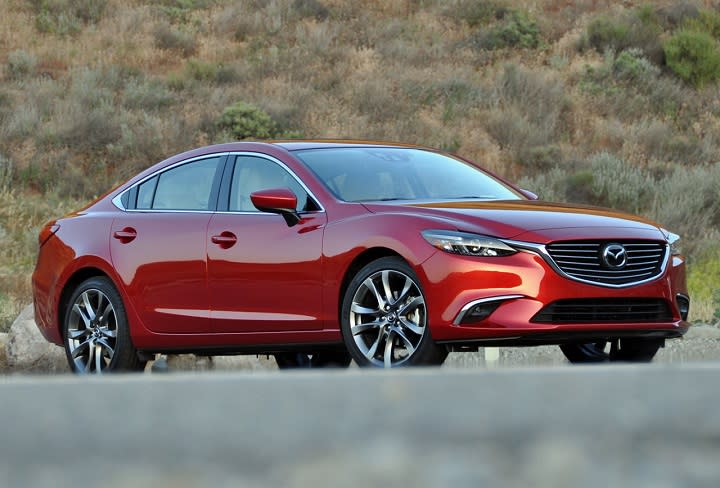EPA Reports Fuel Economy, Lower Emissions Records; Mazda Named Top Performer
Despite stronger demand for SUVs and pickups, the average fuel economy of new vehicles in the United States has increased, while carbon dioxide (CO2) emissions have been reduced in nine of the past 11 years, according to an annual report from the U.S. Environmental Protection Agency (EPA).
In a comparison of 2015 model-year (MY) vehicles vs. those from 2014, the EPA finds that nine of the 12 major automakers selling vehicles in the United States increased their fleet-wide fuel economy averages and reduced CO2 emissions. Mazda achieved the best fuel economy performance (29.6 mpg) and lowest CO2 emissions average (300 g/mi). For the 2016 model year, the EPA projects that Mazda again will achieve the best numbers, improving fuel economy to 30.7 mpg, while reducing CO2 emissions to 290 g/mi.

In 2015 vs. 2014 MY vehicle fuel economy/emissions standings, Mazda was followed by Honda, Nissan, Subaru, and Hyundai. In contrast, Fiat Chrysler had the lowest average fuel economy rating (21.8 mpg) and highest CO2 emissions (407 g/mi) for their 2015 fleet, although it achieved the largest reduction in CO2 emissions (-21 g/mi).Two automakers—General Motors and Toyota—improved their average truck CO2 emissions but recorded higher CO2 emissions averages because both had larger truck shares in 2015 vs. 2014.
In data collected from automakers for the two model years, 2015 adjusted fuel economy averaged a record 24.8 mpg, up 0.5 miles per gallon from 2014. CO2 emissions dropped 8 grams per million (8 g/mi) from 2014 to 358 g/mi for 2015 vehicles. Early data for 2016 MY vehicles indicates that fleet fuel economy may increase to 25.6 mpg (up 0.8 mpg), while CO2 emissions are projected to improve to 347 g/mi—down 11 g/mi.
Major reasons for the improvements, according to the EPA, are new technologies, including gasoline direct-injected (GDI) engines; all Mazda engines use this technology. Automakers also are adopting continuously variable transmissions (CVTs) and automatic transmissions with 7 or more gears. Start/Stop technology and cylinder deactivation also save fuel.
A bright spot for the future, the EPA finds that 17% of estimated MY 2016 vehicle production will meet or surpass its MY 2020 CO2 emissions targets.
Abstract:
Despite stronger demand for SUVs and pickups, the average fuel economy of new vehicles in the United States has increased, while carbon dioxide (CO2) emissions have been reduced in nine of the past 11 years, according to an annual report from the U.S. Environmental Protection Agency (EPA).
Year:
2 016
Check this if this is NOT an Articles Listing Page:
Display Article Date?:
Article Is Flipbook:
No

 Yahoo Autos
Yahoo Autos 
